Tough and light, titanium is thought to be the leading material for stringed instrument adjusters and fixtures, but does the metal have acoustic benefits too? Peter Somerford investigates
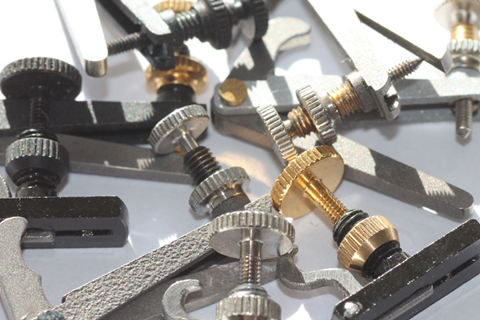
This article is from The Strad’s Accessories 2018 supplement, available with the June 2018 issue - download on desktop computer, via the The Strad App, or buy the print edition
From chin rest clamps, string adjusters and integrated fine tuners to endpins and even tail-guts and end buttons, the range of stringed instrument accessories made from titanium continues to grow. Manufacturers of such components often champion titanium as the optimum material, with excellent mechanical properties and a favourable acoustic quality. But such attributes do not come cheap, owing to the high cost of the raw material and the difficulties of machining it.
For players prepared to pay for it, what exactly does titanium offer that other materials don’t? One of the major advantages of titanium is its strength-to-weight ratio, the highest of any pure metal. In applications such as a string adjuster or a chin rest clamp, titanium’s combination of low density (it’s 45 per cent lighter than steel) and high tensile strength is especially effective.
Knut Tempel, who has used titanium fittings in Tempel Germany’s chin rests for more than 25 years, says: ‘When the weight of the chin rest is a major consideration for the musician, titanium is the best fittings material you can have. Because it’s so strong you don’t have to use so much of it, so the clamps look better.’
One of the major advantages of titanium is strength-to-weight ratio, the highest of any pure metal
Another reason why players might choose a titanium chin rest clamp is if they have a nickel allergy. Titanium is highly biocompatible, hence its use in biomedical implants such as pacemakers and hip replacements, so players avoid the skin reactions or irritation that they might experience with nickel-plated fittings. Add in titanium’s excellent corrosion resistance, and one can see why the metal’s physical properties make it so attractive as an accessories material.
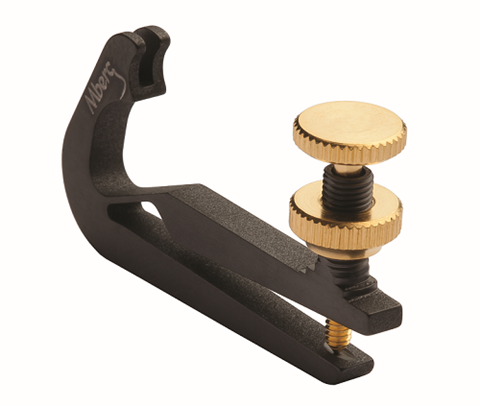
Most titanium used for stringed instrument accessories isn’t pure titanium but a titanium alloy containing six per cent aluminium and four per cent vanadium (Ti 6Al-4V). Also known as Grade 5 titanium, this alloy accounts for half the total titanium usage across the world.
Some accessories manufacturers also use Grade 2 titanium, an almost pure form of the metal, in their products, but this is not as strong as Grade 5. Austrian-based Michael Bergbaur employs titanium alloy in his Mberg string adjuster, which has a one-piece body incorporating a spring joint, as opposed to a pinned joint under the hook.
‘As well as low density and very high tensile strength,’ he says, ‘titanium also has a low elastic modulus, meaning that you can work it without deformation. This combination of mechanical properties allowed me to create the adjuster’s spring joint. The one-piece design gives a definite acoustic advantage, with no pins or other parts to create a damping effect. It also has half the weight of a conventional metal adjuster.’
The screw of Bergbaur’s adjuster is not made from titanium, but from gold-plated brass, to maintain biocompatibility but also because machining such a precise, small thread in titanium alloy can be technically challenging. Manufacturers face the problem that a titanium screw or bolt in a titanium nut can seize up over time, especially in a situation when the screw is turned by hand under the pressure of the strings.
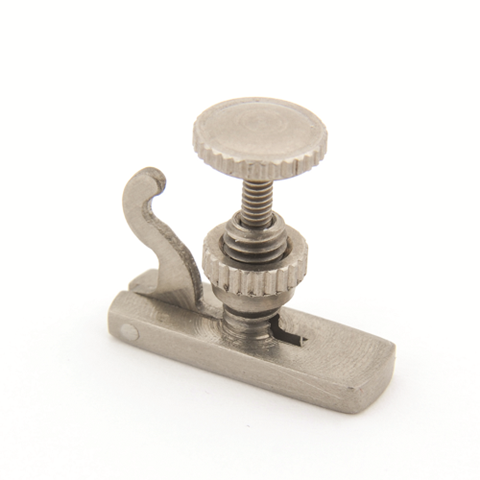
German manufacturer Ulsa solves this titanium-on-titanium issue by using a screw of extra-hard brass, while Chinese company Stradpet’s screw is made from a special anti-friction alloy, combining titanium with aluminium and bronze. By contrast, Otto Musica, a manufacturer that makes most of its accessories in Taiwan, has developed an all-titanium string adjuster that relies on ultra-precise tooling to make a titanium screw and nut combination viable.
Tom Lai, Otto Musica’s director of North American sales, says: ‘We have something of a home advantage in Taiwan, which is renowned for its high-tech and precision-driven hardware industry. Not only can we source high-quality material, but we also have great tooling at our disposal, and at a reasonable cost.’
Stradpet uses titanium bolts with titanium nuts in its range of tail-guts, among them a patented tail-gut for violin and viola that combines an outer layer of titanium wire with a Kevlar core. Marketing director Liang Li explains: ‘The adjustable titanium tail-gut is a perfect match for the all-titanium screw–nut combination because the screws don’t need to be rotated under the pressure of the strings. To adjust the tail-gut length, the tailpiece has to be removed from the instrument.’
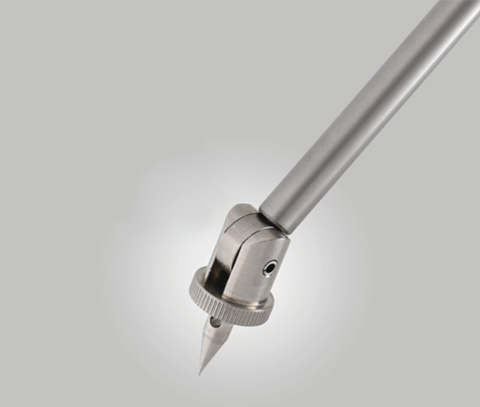
In March of this year, Stradpet launched a new version of its titanium tail-gut for violin and viola, which swaps the Kevlar-and-titanium cord for an all-titanium cord woven from 49 titanium wires. ‘As well as being strong and robust, the Titanium Tailgut Pro is softer and more flexible than steel-wire cord, nylon tail-gut and even the Kevlar–titanium tail-gut,’ says Li. ‘This softness means the tail-gut can be more closely fitting on the saddle, avoiding saddle damage.’
Another recent Stradpet product is a titanium end button. Available for violin and viola, it comes in solid and hollow versions, designed to offer players different acoustic possibilities. The hollow version even has a synthetic screw that, when removed, allows a visual inspection of the inside of the instrument.
Such innovations have expanded the potential of titanium as an option for players, but even the more affordable titanium accessories remain significantly more expensive than comparative products made from steel, brass, aluminium or composite. This is partly because of much higher machining costs. Ulsa’s director, Oliver Ullsperger, notes that titanium takes almost ten times as long to mill as brass, and Otto Musica’s Tom Lai estimates the machining cost for titanium chin rest clamps to be up to 20 times that for conventional nickel-plated clamps.
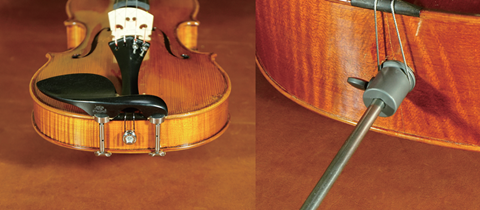
Even before machining, however, titanium is an expensive raw material to acquire. Although titanium deposits are widely distributed throughout the world, manufacturing the metal from ores commonly involves a lengthy, energy-intensive process that requires temperatures in excess of 1,800 degrees Fahrenheit.
Alternative extraction processes, which have the potential to bring down the price of titanium, are being developed. But for now, it’s no surprise that Stradpet has opted for stainless steel, and not titanium, for its cello tail-gut, when titanium rope, according to the product’s marketing literature, costs nearly 100 times as much as comparable stainless steel rope.

Another way to keep product prices down is to use titanium in combination with more affordable metals. Ulsa, for example, offers a string adjuster that combines titanium with aircraft-grade aluminium. Though not as strong and durable as titanium, aluminium is lighter, much faster to mill, and far cheaper, meaning that this Ulsa adjuster is less than half the price of the company’s full-titanium model.
If players can see past the price tag, then titanium does appear to be the optimum accessories material, with a formidable combination of biocompatibility, strength, lightness and corrosion resistance. But what if weight or nickel allergy aren’t issues? Can titanium simply offer players a sonic advantage? Proponents of titanium as a superior acoustic material point to its low internal damping coefficient.
Stradpet’s Liang Li explains: ‘Acoustic energy has very little attenuation in titanium alloy. When mechanical vibrations are applied to the material, its vibration decay time is longer than that of steel or copper. For example, if you were to take two identically sized and shaped tuning forks, one made of titanium and the other in steel or copper, and strike each fork with the same force, you would find that the oscillating sound of the titanium fork lasts the longest.’

Michael Bergbaur is not convinced that titanium has a sonic advantage over brass or steel, however. ‘I carried out acoustic tests comparing titanium and brass, in cooperation with scientific institutes in Germany and Austria, and found that the damping coefficients of the two materials were almost the same,’ he says. ‘For me, there are no special sonic improvements; the big advantage of titanium comes with its mechanical properties.’
Beyond objective testing and measuring, evaluating sound is of course subjective. And no more so when comparing cello and bass endpins, with manufacturers offering titanium models in both hollow tube and solid-rod versions, alongside endpins made variously of brass, steel, aluminium and carbon fibre.
Michael Vrzal, managing director of Berlin-based Fiedler Cases, the retailer for Klaus Bender endpins for cello and double bass, says: ‘Titanium is not a silver bullet to solve all sound issues. Titanium endpins can affect the sound of an instrument in a positive way, but so can high-quality carbon fibre endpins. Players need to decide what material works best with their instrument, but very often they choose a titanium endpin for its brighter, more powerful sound.’ Otto Musica’s Tom Lai agrees, and says that in general the feedback he has had from cellists has been that titanium endpins offer more penetrating power, and a little more edge to the sound.
‘Titanium endpins can affect the sound in a positive way, but so can carbon fibre’ – Michael Vrzal, Fiedler Cases
Stefan Krattenmacher, a maker of cellos and double basses in Germany, finds that titanium delivers a stronger, clearer sound compared with steel endpins, but his first-choice endpin material is usually brass. ‘It’s much heavier than titanium, but it has a better sound,’ he says. ‘I find that, especially for double basses, more weight is an advantage.’
Krattenmacher, furthermore, has concerns about titanium’s environmental impact. ‘All the energy needed to produce titanium in the first place means that purely from an environmental perspective, it’s not great. And for a 16mm solid double bass endpin, you have to use quite a lot of material.’
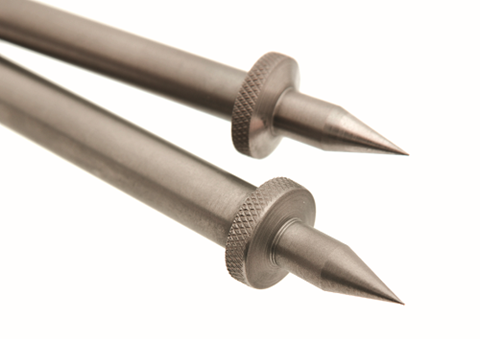
A specialist manufacturer in Japan, Mitsuke Precision Manufacturing, combines titanium with other metals to create high-end endpins that draw on the sonic potential of each material. ‘Cellists are looking for different qualities in the sound,’ says the endpins’ developer Junichi Mitsuke. ‘So I tried making endpins in a variety of materials. Brass gives a rich, deep sound, whereas titanium brings brightness and clarity in the treble. Combining different materials offers a way to balance and tailor the sound and draw together these individual qualities.’
Alongside a brass-and-titanium model, the Mitsuke range of cello and double bass endpins includes the Triple Brillante, which combines titanium with brass and tungsten, and the Quartet, which supplements the latter mix with carbon fibre.
Such high-tech endpins, with prices running up to around £250, may understandably be beyond the consideration of many players. Yet other titanium products, such as string adjusters and chin rest fittings, are more accessible, and remain a serious option for players with a specific need, especially if that is to avoid skin irritation or to reduce the overall weight of their instrument.
This article is from The Strad’s Accessories 2018 supplement, available with the June 2018 issue - download on desktop computer, via the The Strad App, or buy the print edition



































No comments yet